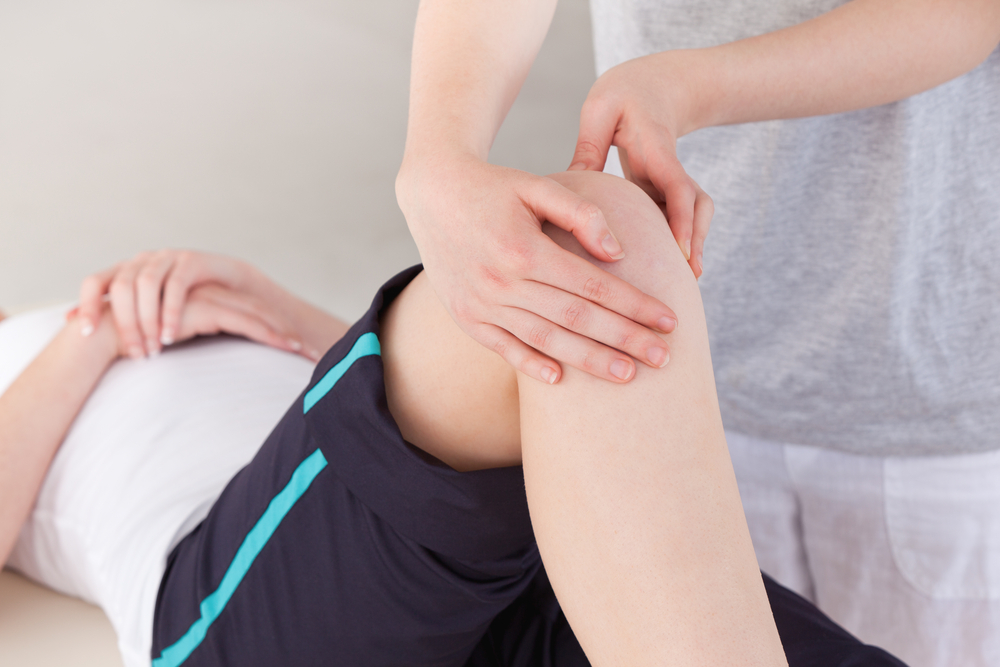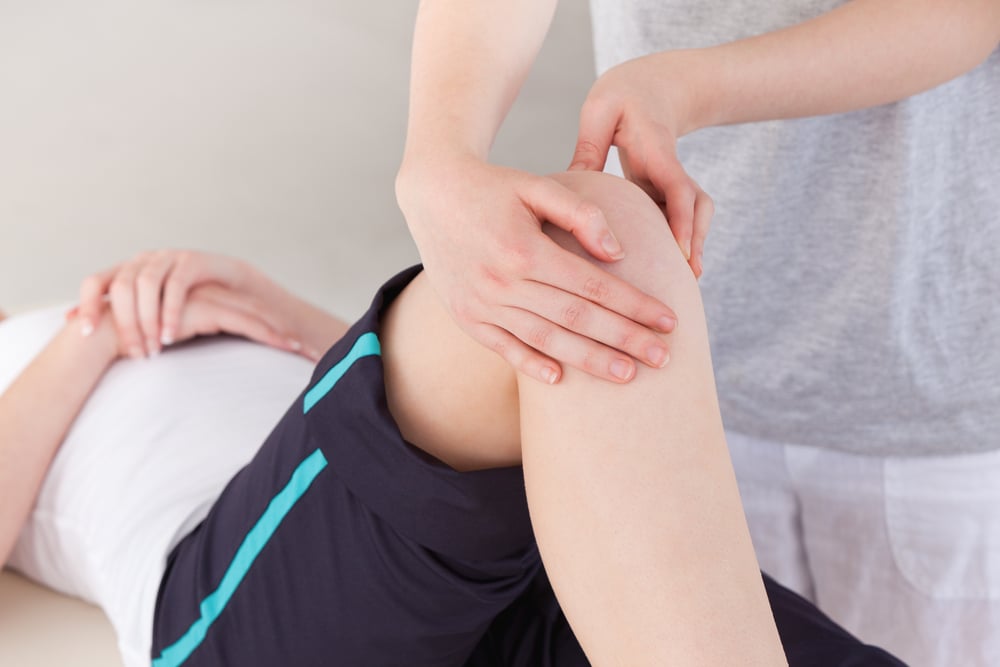What is Osgood-Schlatter Disease?

What is Osgood-Schlatter Disease?
Osgood-Schlatters is a growth-related disease that causes pain and swelling below the knee joint. It has been reported to affect 21% of adolescents who are actively participating in sports. In this post we will explain what Osgood-Schlatter Disease is, why it is important to see a physiotherapist for it, and provide you with some management strategies.

Table of Contents
What is Osgood-Schlatter Disease?
Should I See a Physiotherapist?
Management for Osgood-Schlatter Disease
Conclusion
FAQ
What is Osgood-Schlatter Disease?
Osgood Schlatters can cause pain for active adolescent children (10-15 years old for males, 8-13 years old for females), typically after a growth spurt. There does not need to be any trauma for the pain from Osgood Schlatters to come on.
Activities that include a lot of jumping and bending — hockey, basketball, volleyball, soccer, skating, gymnastics, or ballet — can cause the quadricep muscles to become tight which can increase the tension over this area. It can occur on one or both sides, depending on the amount of activity, individual, and type of sport.
Should I See a Physiotherapist?
Osgood-Schlatter disease usually resolves with time and complications are rare. However, it is highly recommended to see a physiotherapist who can perform a physical examination and confirm diagnosis. It is better to know your exact problem rather than assuming!
Management for Osgood-Schlatter Disease
The good news is that Osgood-Schlatter disease is a very common and treatable ailment for adolescents. Symptoms typically disappear after your child's bones stop growing. Here are some management tips:
- Rest and Ice
Rest or relative rest from your sport or activity decreases the inflammation and gives the cartilage in the area time to heal.
You do not have to completely stop playing your sport when going through Osgood-Schlatter disease unless it’s causing too much pain. Putting ice around the knee after the activity or sport may also help reduce some pain. - Stretch
It is highly recommended to stretch the quadriceps, which can help reduce the tension where the kneecap (patella) tendon attaches to the shinbone. A patellar tendon strap also can help relieve the tension. - See a Physiotherapist
A physiotherapist can conduct a thorough history and physical examination to determine if you are presenting with Osgood-Schlatter’s Disease.
A physiotherapist can also help reduce pain and inflammation by giving advice on activity modifications and providing active treatment. Treatment may include therapeutic modalities, manual therapy, and a comprehensive exercise program.
Conclusion
In conclusion, Osgood-Schlatter disease is a common condition among active adolescents that can cause knee pain. While it typically resolves with time, it's important to see a physiotherapist to confirm the diagnosis and develop a management plan. Rest, ice, stretching, and physiotherapy are effective ways to manage the symptoms and reduce pain and inflammation. With the right care and treatment, your child can continue to participate in their sport while managing the effects of Osgood-Schlatter disease.
FAQ
What are the signs and symptoms of Osgood-Schlatter Disease?
Osgood-Schlatter disease typically presents as a gradual onset of knee pain and swelling in the region of the tibial tuberosity (upper shinbone). Pain is also exacerbated by activities that involve running, jumping, or direct contact (such as kneeling). Other signs may include muscle tightness around the knee (i.e., hamstrings, quadriceps, and calf muscles).
How long does it take for Osgood-Schlatter Disease to go away?
Pain from Osgood-Schlatter disease can be very temporary for some people, but most people have symptoms for months. It is typical for this condition to last six to 18 months.
Does Osgood-Schlatter Disease require surgery?
Conservative treatment is recommended as initial treatment. In very rare cases, if pain is debilitating and doesn't subside after the growth spurt, surgery to remove the bony overgrowth might be recommended.
